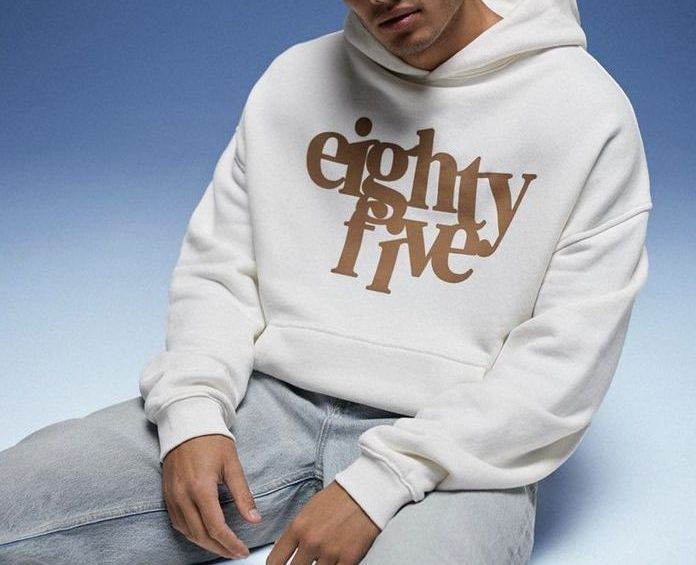In 2025, hoodies have transcended their humble beginnings to become true icons of modern style. No longer limited to casual weekends or athletic pursuits, today’s hoodies embody technological innovation, sustainable consciousness, and daring design. They speak to a generation seeking comfort, individuality, and a seamless blend of function and form. This comprehensive exploration delves into the revolutionary hoodie designs reshaping fashion, uncovering how these next-level garments are setting new standards for creativity, utility, and self-expression.
The Evolution of the Hoodie: From Practicality to Prestige
The hoodie’s journey mirrors broader cultural transformations. Originally designed in the early 20th century for workers exposed to cold climates, it prioritized warmth, durability, and protection. Over time, subcultures such as hip-hop artists, skaters, and graffiti enthusiasts adopted the hoodie, reinterpreting its meaning and reshaping its image as a badge of rebellion, anonymity, and community.
Luxury fashion houses eventually recognized the hoodie’s powerful symbolism, integrating high-end materials, intricate tailoring, and avant-garde concepts. By 2025, hoodies are no longer confined to utilitarian roles. Instead, they bridge gaps between streetwear and haute couture, embodying status, innovation, and artistry. Each thread weaves a narrative of resilience, creativity, and evolution.
Fabric Frontiers: Materials Powering the Next-Generation Hoodie
Innovative fabrics lie at the heart of 2025’s hoodie revolution. Designers increasingly abandon traditional cotton blends in favor of high-performance, sustainable, and smart textiles that cater to modern demands.
Eco-friendly materials such as organic cotton, bamboo viscose, and hemp are prevalent, offering natural softness, breathability, and reduced environmental footprints. Simultaneously, regenerated fibers from post-consumer waste, including recycled polyester and repurposed nylon, dominate eco-conscious collections.
Technical fabrics introduce futuristic functionality. Thermoregulating textiles adjust to body temperature fluctuations, ensuring comfort across varying environments. Moisture-wicking fibers draw sweat away from the skin, promoting dryness and freshness. Smart textiles, embedded with nanosensors, monitor biometric data like heart rate and hydration levels, seamlessly blending wellness tracking with everyday attire.
Moreover, antimicrobial coatings, odor-resistant treatments, and wrinkle-free finishes further elevate the daily practicality of modern hoodies, enhancing durability and aesthetic longevity. In 2025, hoodie fabrics do more than clothe; they actively enrich the wearer’s experience.
Silhouette Innovation: Rethinking Hoodie Shapes
Designers in 2025 challenge conventional hoodie structures, unveiling bold silhouettes that redefine the garment’s identity. No longer restricted to basic pullovers, hoodies now come in an expansive variety of shapes, each catering to different style preferences and functional needs.
Oversized designs maintain their stronghold in youth and streetwear cultures, offering exaggerated volumes that emphasize comfort and casual sophistication. These expansive proportions create striking visual contrasts when paired with fitted trousers, slim skirts, or streamlined outerwear.
Slim-fit hoodies cater to urban professionals and minimalists seeking a more tailored aesthetic. Cut close to the body, these garments embrace precision construction, emphasizing ergonomics, dynamic movement, and a polished appearance without sacrificing comfort.
Asymmetrical hoodies introduce architectural intrigue, featuring diagonal zippers, off-center hoods, and unconventional draping. These avant-garde pieces prioritize visual impact, offering a wearable form of artistic expression.
Cropped styles resonate with trends towards playful, youthful fashion, pairing seamlessly with high-waisted pants or skirts for a balanced, proportionate silhouette. Meanwhile, elongated tunic-style hoodies provide hybrid functionality, bridging the gap between loungewear, casual streetwear, and outerwear.
Convertible hoodies, featuring modular components like detachable sleeves, adjustable hems, and reversible constructions, embody adaptability. They respond to a consumer base that values flexibility, personalization, and multi-use garments suited for evolving lifestyles.
Technological Integration: The Smart Hoodie Era
In 2025, smart technology converges with fashion to transform hoodies into dynamic, interactive garments. Integrating cutting-edge innovations, these next-level pieces cater to tech-savvy consumers seeking enhanced connectivity, convenience, and functionality.
Wearable tech features, such as embedded fitness trackers, biometric sensors, and GPS locators, seamlessly blend into hoodie fabrics, empowering users to monitor health metrics or navigate urban landscapes without additional gadgets. Some designs offer heating elements activated via smartphone apps, enabling customizable warmth on demand.
LED panels integrated into hood fabrics or sleeves allow wearers to display programmable messages, symbols, or art, turning garments into canvases for personal expression. Certain models even offer haptic feedback for notifications, transforming the way individuals interact with their clothing and surroundings.
Additionally, solar-powered panels woven into fabric fibers provide sustainable energy sources, enabling on-the-go device charging. By 2025, hoodies have transcended passive apparel status, evolving into sophisticated tech platforms that enhance everyday life.
Sustainability and Ethical Craftsmanship: Redefining Responsibility
As environmental concerns dominate global discourse, fashion brands in 2025 prioritize sustainable production and ethical labor practices when designing hoodies. Conscious consumers demand transparency, accountability, and meaningful action.
Sustainable hoodie lines showcase low-impact dyes, organic cultivation methods, and water-conserving techniques. Brands leverage closed-loop recycling systems, creating garments designed for disassembly and repurposing at the end of their lifespan. Certifications such as GOTS, OEKO-TEX, and Fair Trade validate eco-friendly claims, offering assurance to discerning buyers.
Artisan collaborations bring traditional craftsmanship into modern design narratives, empowering indigenous communities and preserving cultural heritage. By spotlighting ethical sourcing and fair labor conditions, brands acknowledge their roles as stewards of both environmental and social ecosystems.
Upcycling initiatives transform pre-loved clothing and surplus fabrics into unique, limited-edition hoodie collections. These practices not only mitigate waste but also infuse garments with character, history, and individuality—qualities increasingly prized in a mass-production world.
In 2025, owning a hoodie represents more than a fashion choice—it signifies a commitment to a more sustainable, equitable future.
Luxury Reimagined: High-Fashion Hoodies Ascend
Luxury labels have fully embraced the hoodie, positioning it at the pinnacle of contemporary elegance. In 2025, high-fashion hoodies blend opulence with utility, challenging traditional notions of luxury.
Crafted from premium materials like cashmere blends, silk-infused cotton, and buttery lambskin, these hoodies exude tactile indulgence. Artisanal embellishments—hand-embroidered logos, beading, or intricate appliqué—elevate their aesthetic sophistication.
Monogrammed accents, subtle branding, and minimalist silhouettes cater to discerning tastes, while statement pieces boast bold prints, architectural draping, and daring textures. Some luxury designs incorporate fine jewelry elements, such as gold-tipped drawstrings or gemstone-encrusted zipper pulls.
Limited production runs and bespoke customization options create scarcity, reinforcing exclusivity. Ownership of a luxury hoodie becomes an emblem of elevated taste, artistic appreciation, and contemporary prestige.
Through meticulous craftsmanship and boundary-pushing creativity, luxury hoodies affirm that comfort and couture are not mutually exclusive—they coexist harmoniously in fashion’s most exciting frontier.
Conclusion
As we look toward the future of fashion in 2025, hoodies stand at the forefront of the movement for innovative design, sustainability, and cultural expression. From futuristic fabrics to interactive, smart technology, the hoodie has evolved into a multifunctional garment that transcends its roots in casual wear.
Today’s hoodie is more than just an item of clothing; it is a canvas for creativity, a reflection of personal style, and an extension of the technological advancements that are shaping our world. The rise of sustainable practices, ethical production, and the blend of comfort with high-fashion aesthetics all point toward a future where hoodies continue to dominate and redefine what it means to dress in the modern era.
As consumers increasingly prioritize both style and substance, 2025’s hoodie trends are a testament to the power of innovation in fashion. They offer endless possibilities for self-expression, comfort, and utility, ensuring that this iconic piece of clothing will remain a staple in wardrobes across the globe for years to come.
In conclusion, the next-level hoodie is here to stay, and its evolution is far from over. Whether you’re looking for luxury, functionality, or sustainability, the hoodie of 2025 is a perfect blend of everything modern fashion stands for—style, comfort, and responsibility.





3 thoughts on “Next-Level Hoodies: Top Designs Dominating 2025”
This is exactly what i was looking for, thank you so much for these tutorials
It would be great to try this theme for my businesses
What a nice article. It keeps me reading more and more!